QuestionQUESTION: My leopard gecko has trouble shedding, and before I knew to help him, it's left him with some damaged toes. I've since taken to helping him immediately after his sheds to prevent any further issue.
About 2 days ago, I noticed he was just starting to shed (just over the tip of his nose), I generally leave him alone during this time, and check up on him the following day - but I was out of town yesterday. I noticed this morning when I went to check on him that the tip of his tail is damaged - It's hard to describe - it looks like it's been pinched or something, although I can't see where that could possibly have happened. It's also looking kind of crusty and dark. It's really freaking me out - I don't know what could have caused it, or how it could have gotten this bad so quickly!
Based on your previous advice, I'm removing the substrate today, and using cage carpet, and will try a warm soak and neosporine.
My question is: what should I look for to know that this isn't working and I need to take him to a vet?
Thanks,
Phil
ANSWER: Hi Phillip,
Good on removing the substrate you were using!!! He may have actually bitten his tail if he had any stuck shed there..or heck..he may have thought he saw food!!
Generally, you will see the tip (below the break) will either heal, or dry up and fall off. Its important to keep an eye on the part above the break for any signs of it getting gangrene. If it starts to dry out, more than just a small scab, then its important to get your leo to a vet. You can use some diluted betadine(I use the generic brand from Wal Mart or CVS) To wash the area. When I say diluted, I mean mixed with water so it is the color of a weak tea. Do also watch out for any drainage from it. DO NOT use any peroxide on it other than one time as an initial wash...if you do it more, it will actually destroy good tissue too.
Usually, you will know if its all going well with in a few days...if its looking worse, or if there is no improvement within a week, then I would get in touch with a vet. If you are on good "terms" with your vet, you can ask him/her if you can pick up some Silvadene ointment... its a very good product, but does require a vet to dispense it. Your vet may even phone in a prescription for you to your pharmacy.
I will also include the care sheet I wrote ....
BASIC CARE FOR A LEOPARD GECKO
Leopards are pretty easy to care for but they do need
special care. Here are some of the basic needs of your gecko.
HOUSING: The need to have at least a 20 gallon long tank for one Leo. This needs to have a secure fitting screen top...they can be quite the escape artists!!! They need to have a humid hide box.You can make this with something as simple as a small plastic dish with a hole cut in one side and a small mesh bag filled with some Sphagnum moss coconut bark or Peat moss that you mist.
I made mine out of the small plastic folgers coffee containers...I cut an opening in the lid..and put the moss in..they LOVE it. I use the terrarium moss in mine.
I use that on the warm side of the tank. Be sure to provide a cool hidebox on the other end. I also provide a mid temperature hide...which is in the middle of the tank.I use the critter caves which you can purchase. NOT the ones that have heat in them!!!!
Provide secure climbing areas for your gecko. Fake plants, rocks and branches are all fine to use. be sure there are no wires or sharp ends to any fake plants you use.
*****SUBSTRATE:(that's the stuff on the floor of your tank) Newspaper, lizard carpet or paper towels work great and are easy to clean and are much safer than any loose substrate. Sand or other loose substrate is not recommended as that they can be deadly to the leo when it is ingested(eaten, even by accident while eating their insects)...A very graphic site of an impacted leo surg can be seen at http://homepage.mac.com/exoticdvm/reptile/PhotoAlbum181.html it is very graphic!!! ******What I have found that works great for safety and heat distribution is using about 1/4 inch of childrens play sand(since the tiles fit tight together, there is no sand danger) on the bottom of the tank and on top that you place ceramic or slate floor tile. What is nice is that the 12 x 12 squares fit perfect in a 20 gallon tank with no spaces between the tiles. The sand and the tile distribute the heat wonderfully. Using the under tank heater as described is what distributes the heat. Also, overhead heat will help in heating the tiles...I've been using this set up for several years and the leos love it. Using a tile that isn't smooth is recommended. **********
TEMPERATURES: They need a warm area of 88-92 degrees and a
cooler area in the upper 70s, low 80s. At night their temperature can drop to the low to mid 70's.
Never use a hot rock for a leopard gecko...or any reptile.
They can severely burn any reptile. You can use a heating
pad under the tank,under tank heater, or you can use a regular household lightbulb in a dome fixture with a ceramic socket in it to keep the warm area at the 88-92 degree area.At night, no white light. If room temperatures stay above 70 degrees, no extra night heat is needed. The undertank heater or heating pad should cover about 1/3 of the tank....be sure to raise the tank up about 1/4-1/2 inch off the stand when using an undertank heat source to prevent heat build up which can cause the glass to break and hot spots in the glass. Be sure to have a good layer of newspaper, carpeting or, even a thin flat rock(such as tile) on top the area that the undertank heat source is placed...if you use a thin rock or tile, it helps to distribute the heat very well.
You can use the special nighttime lights that are designed for reptiles. I like using a ceramic heat emitter on a thermostat for nighttime heat.
DO NOT use black lights or party lights as they can cause eye damage!!!!
The wattage you use will vary based on room temperature and size of tank.
LIGHTING: Leopard geckos do not need UVB lighting but it does not hurt them to give them uvb. They should have some type of light during the day, be it a uvb tube, regular florescent light, reptile day light or regular household lightbulb. NO white lights at night!!!
FEEDING: Geckos should not be fed crickets or other insects that are bigger than the space between their eyes. Generally, hatchlings can be fed more than once a day,juvys can be fed twice a day, adults are fed once daily or every other day, in the early evening. Crickets and other food items such as silk worms, super, and an occasional treat of a wax worm, need to be dusted with a calcium supplement two times a week and also they should have a small dish of calcium in their tank. I use the lid of a milk jug for the little dish of calcium in their tank. For dusting the insects, Use a calcium with no added phosphorus. Insects must be gut loaded(fed) for at least 48 hours prior to feeding your gecko. Remove any uneaten crix or superworms after 15-20 minutes..... Place a piece of cut potato in the tank so that if you have missed any uneaten insects, they will eat the potato instead of nibbling on your gecko!!!
*************You have to be sure to feed your crickets and insects the right foods before feeding them to your gecko. If your crickets/insects are not healthy and well fed, your gecko will not get the nutrition he needs. You can gut load your crickets and insects greens, veggies, cereals or specially designed commercial foods for crickets or the insects you are feeding. ************
Be sure to have a small dish of clean water for your gecko at all times!!
You can offer them some baby food or fruits on occasion ...
Mine will even eat a small piece of watermelon now and then.WATER: always provide a dish of drinking water. If you choose to mist your gecko to drink, its best to not get the tank too wet as that they do not do well with higher humidity. Sometimes its better to take your leo out of their tank to mist them to get them to drink!!!
HANDLING: Some geckos enjoy being held...others prefer not to be handled at all. Be sure to be very gentle when holding your leo and NEVER grab them by the tail! Their tails are extremely fragile and will break.
I do suggest finding a vet that can treat reptiles BEFORE you actually need one!!! To find a vet that is able to care for reptiles:
http://www.herpvetconnection.com
http://www.arav.org/ECOMARAV/timssnet/amm/tnt_mdsearch.cfm
http://www.anapsid.org/vets/
For more information on leopard geckos:
http://www.thegeckospot.com/leocareindex2.html
http://www.drgecko.com
If you have any questions or don't understand something, please let me know.
---------- FOLLOW-UP ----------
QUESTION: Thank you for your reply. I had to rush to work this morning and I didn't get a really good look at it until today while I was removing the substrate and getting him all cleaned up. It looks like it may be a bite like you said - The place I noticed the most was closest to his body, but if you look carefully, there's another dent closer to the tip of his tail - and they are about the width of his mouth apart!
The tip appears to already be hard/dried, the place in the middle isn't looking very good - but it looks pretty normal above the raw/red part and he's behaving normally and still seems to have a good appetite.
I expect the tip after the second wound to fall off based on the progression so far. What I'd like you to clarify is should I worry if the part BETWEEN the wounds starts to dry out like you said (more than just a scab)? Or just worry if it gets worse ABOVE the wound?
It seems very possible that he may lose everything below the highest wound, which makes me really upset - but as long as he's going to be okay, it's an acceptable outcome.
AnswerWith having basically two areas that are injured..you will have to keep a close eye on both parts...but... the real important part is the one that is closest to his body. If the part above the highest injury starts to look nasty, then there is a problem.
Their tails are made to fall off, but with injuries, they very well can heal fine also. It does sound like he will loose the tip.
If he happens to loose his whole tail, remember to feed him well fed insects and offer a few(3-4) wax worms about once a week. With their tails storing all their fat, feeding them very nutritious foods is vital. Crickets, superworms, silkworms are the best..
If he is going to loose his entire tail, you will most likely see it start to shrink(the tail)
If he goes off food at all for more than a day, or acts off in any way, do get to a vet as the sooner antibiotics are started, the better chance of warding off a major infection. Of course if any part starts to have a drainage from it, then the vet is needed.
It doesn't matter if its the tip, the part closest to the body or the middle of his tail... gunky drainage is NOT a good thing.

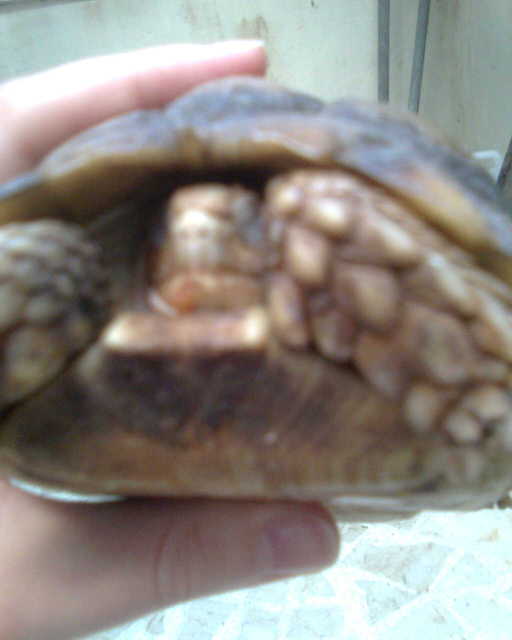 tortoise is sick
Questiontortoise
QUESTION: hi im a 23 year old f
tortoise is sick
Questiontortoise
QUESTION: hi im a 23 year old f
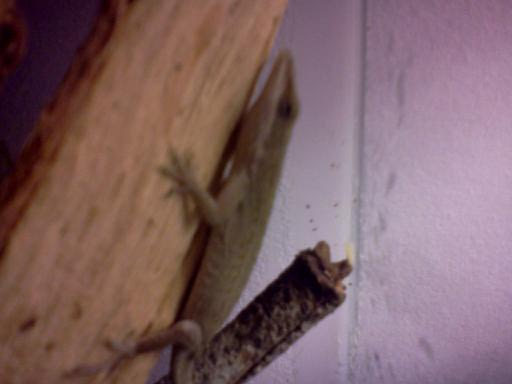 re: sick anole. Is there anything I can do?
QuestionQUESTION: Hi. Im hoping youll have some suggest
re: sick anole. Is there anything I can do?
QuestionQUESTION: Hi. Im hoping youll have some suggest
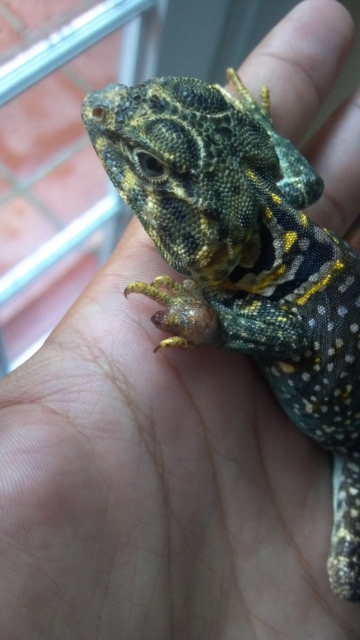 Collared lizard
QuestionQUESTION: Hi, My collared lizards finger has fa
Collared lizard
QuestionQUESTION: Hi, My collared lizards finger has fa
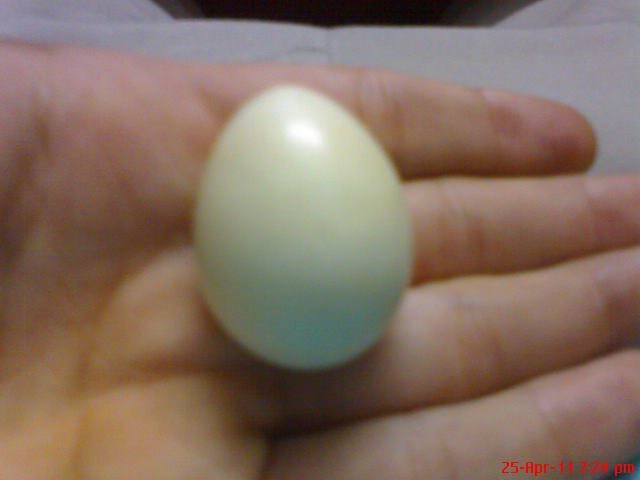 egg
Question
egg
Hello,i just recently found an egg and i n
egg
Question
egg
Hello,i just recently found an egg and i n
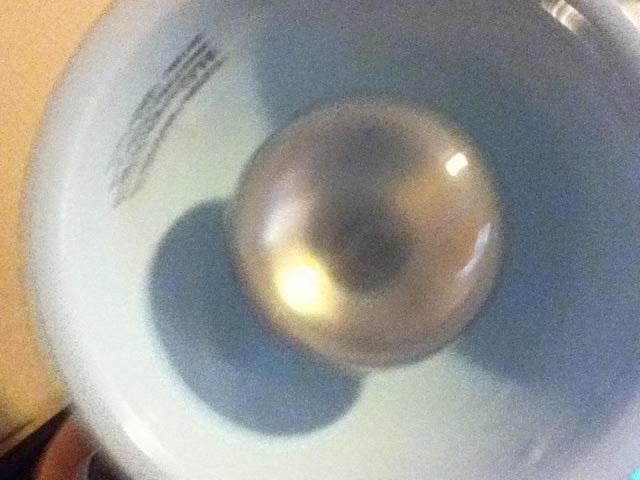 Can my bearded dragon eat dead crickets?
QuestionQUESTION: I have a about 6 month old bearded dr
Can my bearded dragon eat dead crickets?
QuestionQUESTION: I have a about 6 month old bearded dr